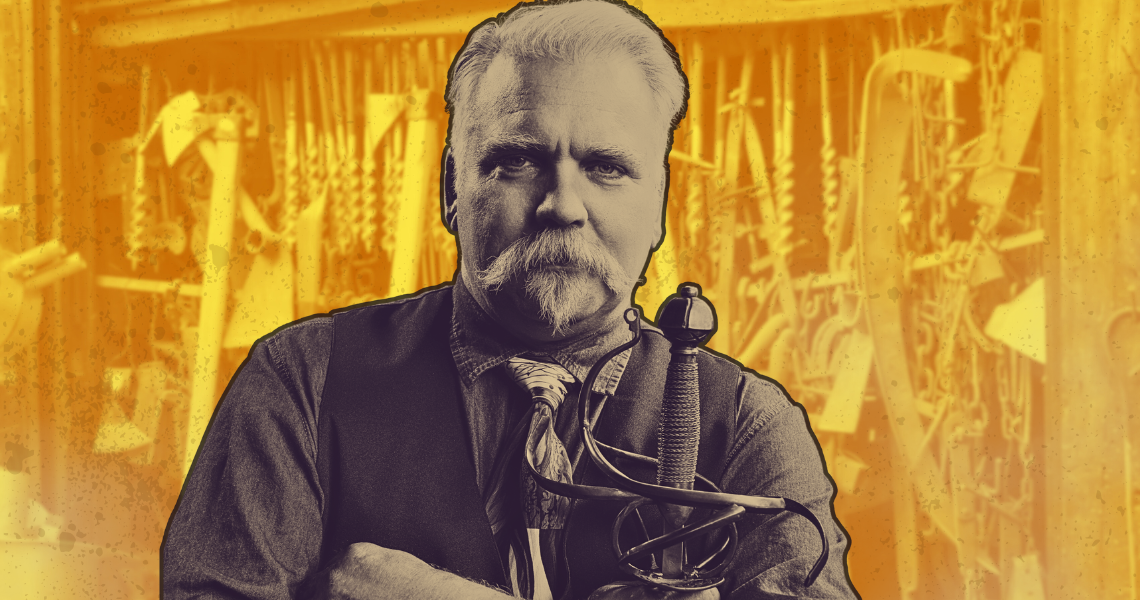Weapons History 101: The Vaquero Machete
This week’s episode of Forged in Fire introduced viewers to a unique piece of weaponry, the VAQUERO MACHETE. Let’s take a look at the history and breakdown of this utilitarian blade.
Vaquero machetes got their name from the people who wielded them, the Vaqueros. Vaqueros are considered the original cowboys of the southwest region of North America and were usually people of African, Native American, Spanish, or Mexican descent. With their distinctive handwoven ropes and impeccably trained horses, Vaqueros were often employed (and sometimes enslaved) by ranchers, who hired them to look after cattle and train horses. Their riding, roping, and herding abilities were so legendary that ranchers would sometimes travel across the region seeking only the best of the best Vaqueros to hire.
(Image credit: Frederic Remington)
Ropes and horses were not the only tools of the Vaquero, however. Many carried another important piece of equipment at their side; their machetes.
The term machete is Spanish in origin, coming from the root word macho, a reference to a sledge or sledgehammer. Machetes are known for their large, heavy blades and are commonly used for chopping and cutting through thick vegetation. In some areas of the world, they are even used to harvest crops like sugar cane, which have a thick stock that normal harvesting tools cannot cut through as easily.
Bottom line, machetes are the ultimate tool for anything involving hacking, cutting, bludgeoning, and clearing. Historically, they have also been used from time to time as battle weapons, primarily in instances of uprisings, as they are easily accessible to the average person. But Vaquero machetes are just as unique as the riders who carried them.
“Bottom line, machetes are the ultimate tool for anything involving hacking, cutting, bludgeoning, and clearing.”
The primary functions of the Vaquero are the same as any other machete: clearing land and protection. Being out on the open prairie or deep in mountain country, and keeping both themselves and the cattle safe for long periods of time was a difficult and dangerous task. Sometimes new trails needed to be cut for the herd to get through, and sometimes the cattle needed to be defended.
The distinctiveness of the Vaquero machete comes mainly from the slenderness and length of the blade, as it appears much more sword-like in style and function and even typically has a slight curve.
(Image credit: Wrongside Riposte)
Unlike typical machetes whose thicker blades commonly range from 12 to 18 inches, a Vaquero machete is thinner with blade length ranging anywhere from 24 to 28 inches. The slim profile of the blade made it considerably lighter and easier to swing. Additionally, the exaggerated length of the blade also allowed the user to remain on horseback while still effectively reaching the brush and weeds they were trying to clear. This versatility while mounted proved to be the most important factor for these men who virtually lived their lives on the back of a horse.
Another distinguishing feature of the Vaquero machete is the handle, which is usually adorned with an animal head pummel. No doubt a byproduct of the Vaqueros’ deep connection with their steeds, the pummel most commonly resembled a horse head, though other decorative figures were used as well.
Steeped in history, the Vaquero machete’s design and function was integral to the everyday lives of these hallowed cowboys.
Be sure to check out Season 9 Episode 19 of Forged in Fire to watch two bladesmiths take a stab at crafting their own versions of this unique weapon.
More Weapons History 101
Trending


















